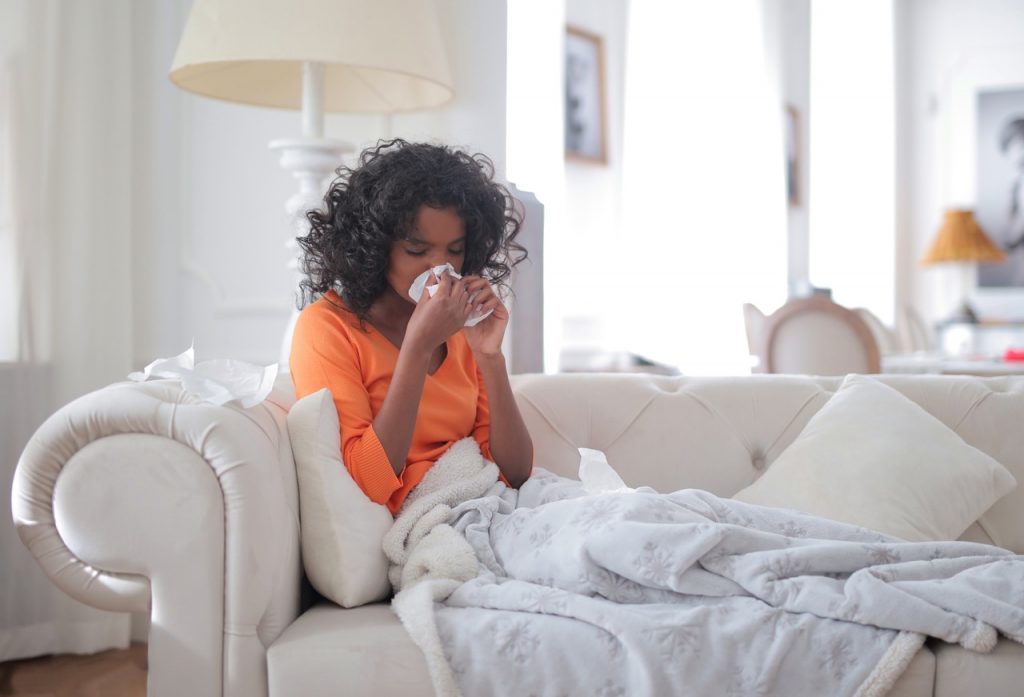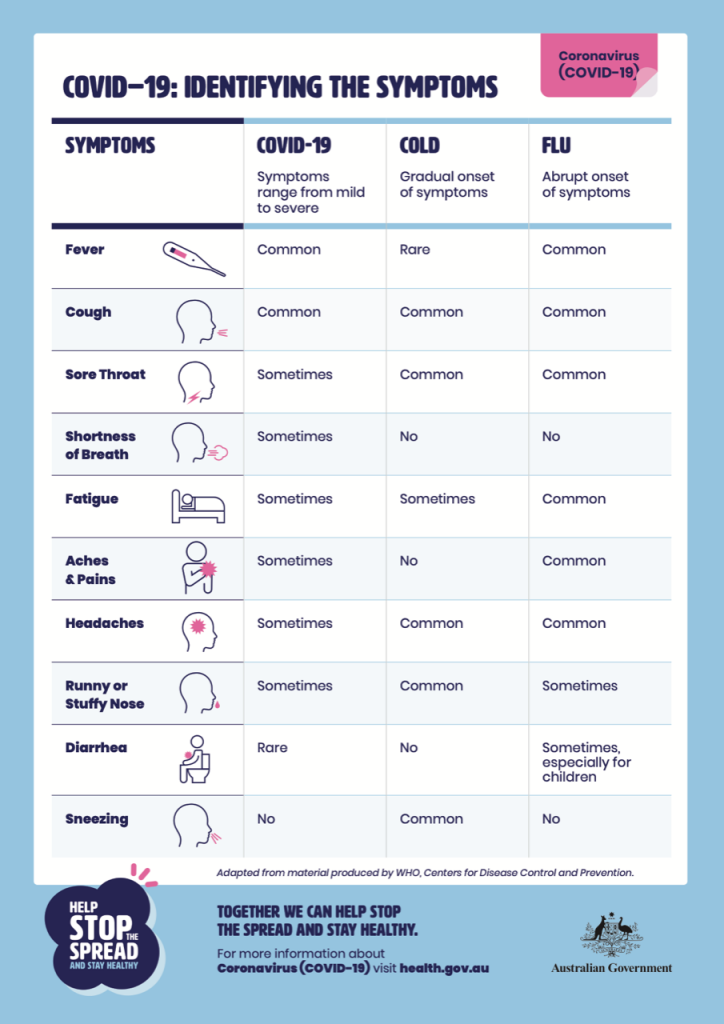Allergies, colds and COVID
You sneeze. Perhaps you have little sniffle. And now, a bit of an itchy throat. Before 2020, you might have soldiered on without a worry. Now that it’s springtime in Australia, can you assume it’s just your allergies?
With symptom overlap between seasonal allergies, colds and COVID-19, it’s now confusing to know what to do when you have a runny nose or sneezing.
Here, we help you to detangle the differences, and better understand how you can manage colds and allergies in 2020. You may need to adjust some of your expectations and actions in light of the global pandemic.

Seasonal Allergies
Seasonal allergies (‘hay fever’ or seasonal allergic rhinitis) are often triggered when tiny pollen particles from plants release into the air to fertilise other plants. This happens at particular times of year – especially springtime.
This diagram from the Centre for Disease Control (CDC) in the USA shows the differences and similarities between the symptoms of seasonal allergies and COVID-19. They share some symptoms, but there are often some key differences between the two. For example, COVID-19 can cause fever, which is not a common symptom of seasonal allergies.

What to do if you suffer from seasonal allergies (hay fever)
As some of the common symptoms of COVID-19 and seasonal allergies are similar, you may find it difficult to tell the difference between them.
If you have any possible COVID-19 symptoms (even if you suspect it’s just your first allergy attack of the season), get tested for COVID-19 to confirm your diagnosis. If you normally have seasonal allergies and you experience any new symptoms or a change in your symptoms, get tested for COVID-19 straight away.
Given the similarities, doctors are urging those with seasonal allergies to manage them as best they can.
The best thing to do is to stay away from whatever makes your symptoms flare up. For example:
- Limit your time outdoors and seek indoor spaces with clean air.
- Create a cleaner air space at home to protect yourself from outdoor air irritants. For instance, use a portable air purifier in one or more rooms.
- When outdoors, avoid activities that stir up pollen, such as mowing lawns or raking leaves.
- When you return indoors, remove pollen particles by taking a shower and changing your clothes.
If you are unsure about what might be affecting you, please contact your GP. Your GP can help you:
- work out an effective treatment plan for your seasonal allergies and/or asthma.
- continue your current seasonal allergies treatment plan
Those who get hay fever may also experience asthma during allergy season. Make sure you have an asthma treatment and prevention plan in place.
To speak with an InstantScripts GP:
The common cold
The common cold is caused by rhinoviruses. These viruses cause respiratory symptoms such as:
- runny nose
- sore throat
- sneezing
The influenza virus (more about that here) also causes these respiratory symptoms. COVID-19 is caused by a new form of coronavirus called SARS-CoV-2. Coronaviruses are group of viruses that cause also cause respiratory infections.
The table below summarises the differences in symptoms between the various respiratory viruses circulating in the community.

It can be tempting to assume your symptoms are not related to COVID-19. Perhaps you think that a test isn’t necessary or that getting tested is a hassle or difficult.
A recent Monash University study revealed that 85 per cent of Australians who have cold or flu-like symptoms are not getting tested.
If you develop symptoms (fever, a cough, sore throat, tiredness or shortness of breath), get tested for COVID-19.
Follow any stay-at-home (isolation) guidelines given to you by the health workers at the testing clinic.
What is the best way to prevent the spread of viruses?
Fortunately, the same public health measures for COVID-19 apply to the spread colds and flu:
- Wash your hands with soap and water for 20 seconds (or use an alcohol-based hand sanitiser).
- Cover your nose and mouth when coughing and sneezing. Use a tissue or your elbow, not your hands.
- Avoid close contact with people unwell with cold or flu-like symptoms. Stay home if you have these symptoms.
- Avoid touching your face and avoid shaking hands with others.
- Maintain a physical distance of 1.5 metres from others as much as possible, and avoid crowded places.
You must wear a mask if directed by your state government. If masks are not mandatory, consider wearing one:
- When it is hard to stay 1.5 metres apart from others (e.g on public transport)
- In areas where there has been community transmission
- If you work in a cafe, restaurant, pub, club or other venue with a higher risk of transmission
- When in high risk indoor areas (like places of worship)
- When caring for vulnerable people.
Living through this pandemic requires some changes to our usual ways of managing colds and allergies. Get tested for COVID-19 when appropriate, manage your allergies and/or asthma optimally and stay healthy by practicing good public hygiene measures.
For more information go to www.health.gov.au.
© InstantScripts
Level 8 / 637 Flinders St.,
Docklands VIC 3008

